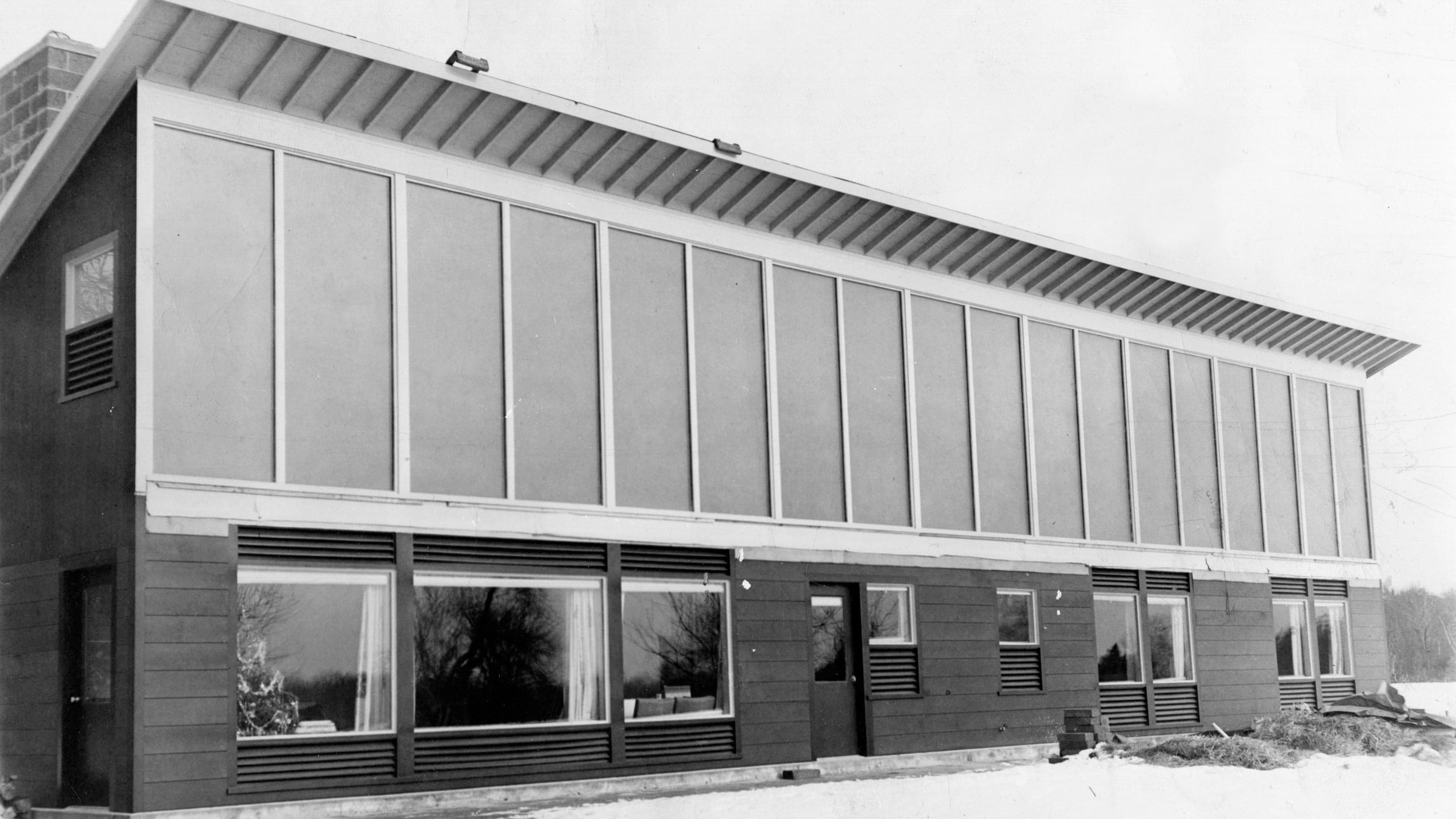On Christmas Eve 1948, a family of three moves into a home in Dover, Massachusetts with unusually large windows—the world’s first fully solar house, an idea decades ahead of its time. Nobody had ever tried living in a residence heated only by the sun, much less through a frigid New England winter.
The 800-square-foot wedge-shaped structure, which came to be called the Dover Sun House, had two bedrooms and was built on an insulated concrete slab in the Boston suburb. Eighteen south-facing 10-foot-tall panels on the second floor took in the solar energy, then processed and sent it to the living quarters downstairs. The brainchild of Hungarian-born engineer and biophysicist Maria Telkes, Dover Sun House was developed along with architect Eleanor Raymond, who designed the house and Boston philanthropist Amelia Peabody, who financed the project.
Telkes, who emigrated to the U.S. in 1925, became a recognized pioneer in the field of solar energy. After working at Westinghouse Electric as a research engineer focused on energy conversion, she partnered with the Massachusetts Institute of Technology in 1940 on a solar energy conversion project that launched her decades-long innovations in harnessing the sun for power. Notable later efforts included a solar oven, funded by the Ford Foundation, and a solar still for converting seawater into freshwater, a U.S. government wartime project. By the time of her death, the “Sun Queen,” as she came to be known, had earned more than 20 patents.
Andrew Nemethy, who was a young boy when he moved into the house with his parents in 1948, said this about Telkes in an interview: “She wanted to prove that people could live in this house. She needed people to be the astronauts. I guess you could say we entered a lottery that we never knew that we were entered into and ended up with this wonderful gift of living in this house.”
In a 2019 essay for The Boston Globe, Nemethy talked about the solar home’s many quirks, including the daily need to raise or lower the shades that covered the picture windows. Telkes, who called the house the “Model T of the sun-heated houses,” used flat-plate air heaters and an experimental heating method involving salt storage that ultimately failed after two winters.
The physical structure of the Dover Sun House succumbed to the passage of time, and the house was demolished in 2010. However, the innovative structure played a pioneering role in the future industry of solar energy, inspiring new generations of scientists, architects and environmentalists.
